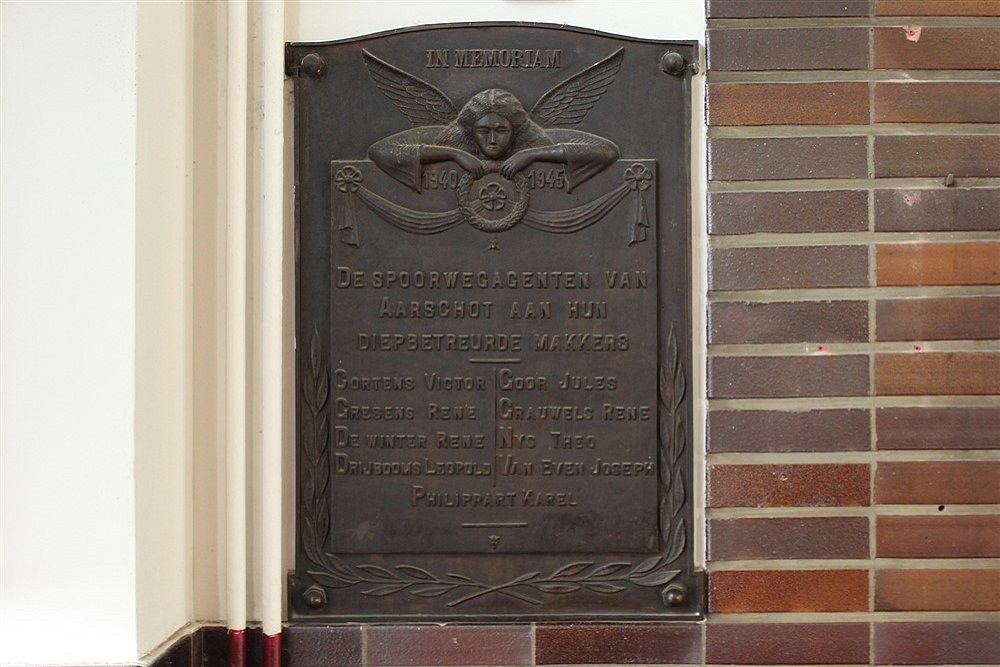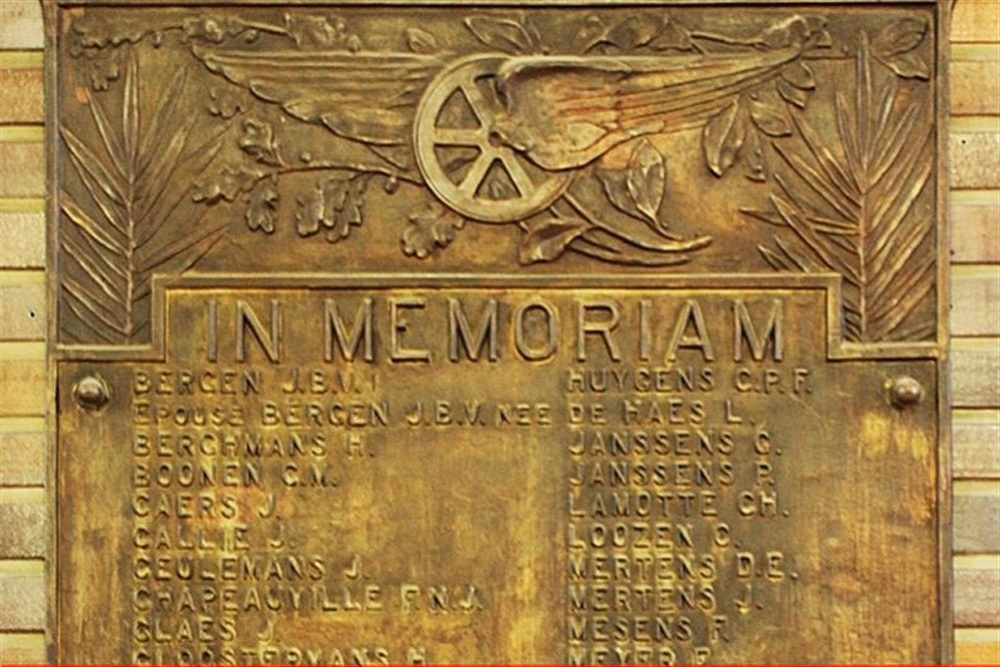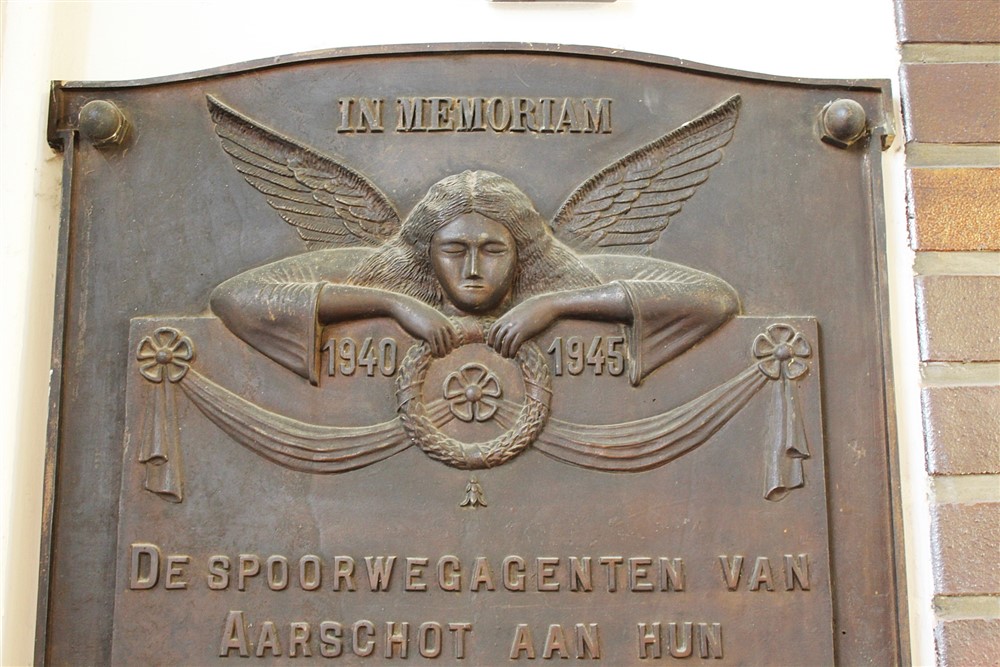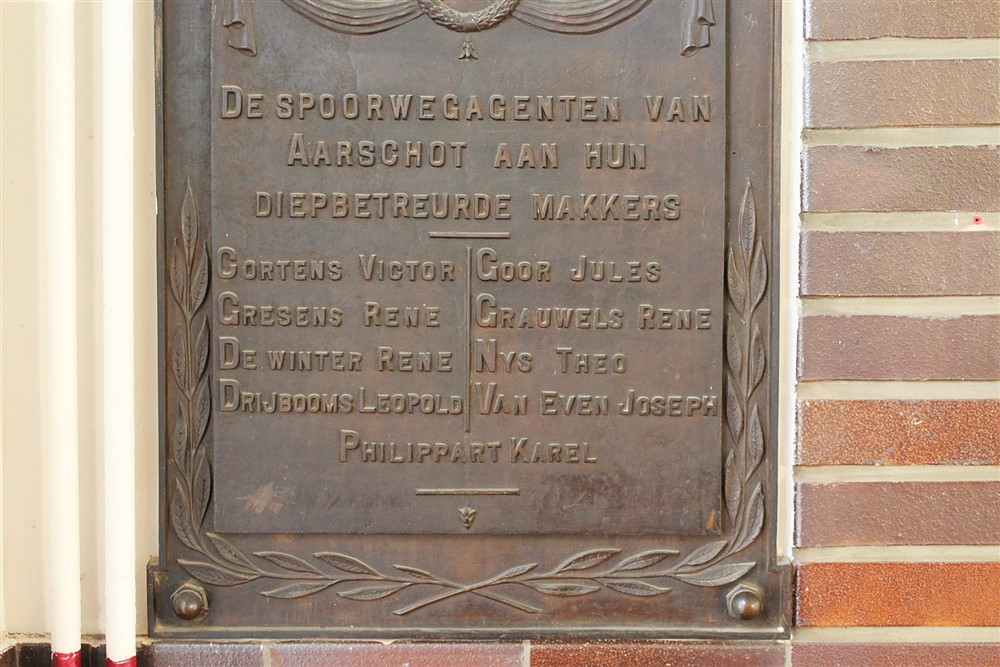Memorials Station Aarschot
Plaque commemorating the victims of the railway staff at Aarschot station.
The facts
When the German soldiers entered the north of the city of Aarschot around 7:00 am on August 19, 1914, the last train loaded with refugees also left the station. The station was virtually spared during the First World War. The railroad junction was important to transport German troops and war material. The tram network that connected the city and the villages in the region was systematically demolished. This dismantling reinforced the isolation of the rural communities.
The list of names of the victims on the memorial plaque is very long. These are names of railway men associated with the station. They are victims during the performance of their service, as well as murdered or killed soldiers at the front.
We see the name of François Chapeauville, stationmaster and veteran of 1870. That morning of August 19, 1914 he returned home unemployed. He said to the bystanders: "The Germans are not fighting civilians ...". These words sound naive today when we read the text that his widow filled in on the war damage form: "Wednesday, August 19, 1914, around 8:30 am, the bandits entered our home; they have driven us out with pumping breasts; with arms raised we have ranks up to the execution site 800m from our house. There they shot my husband after crushing his right jaw. All residents of the same row of houses that were there with them suffered the same fate, but several were finished with butt strokes and with the bayonet. "
About the plaque
Little is known about the memorial plaques erected in the stations after the First World War. This has to do with the fact that the exploitation was partly still in the hands of private companies. In Aarschot this was Grand Central Belge. Interestingly, the exact same design of memorial plaque can be seen in Hasselt station, which was also operated by the GCB.
Plaque commemorating the victims of the railway staff at Aarschot station.
The facts
Sunday May 7, 1944 was cloudy and gloomy. Nobody expected an attack. But at 9:45 am the first formation of American bombers appeared and a little later the earth thundered with the violent violence. A second and a third bomb wave followed. The target, Aarschot station, was barely hit, but fifty houses in the neighborhood were in ruins and six dead civilians were counted.
A few days later, on Tuesday 9 May, more than 4,000 aircraft took off from England. At 8.45 am the alarm siren rang in Aarschot, but the planes passed high in the air. The inhabitants hesitantly started their daily activities. Until a few moments later, three formations of bombers again caused death and destruction in the city. The railway complex, the streets around the station and the beguinage were severely affected. The Church of Our Lady was severely damaged. Dozens of German soldiers who were in the apprenticeship school at that time lost their lives. Rail passengers looking for a safe haven were killed.
On May 11, 76 planes finished work. Even now the damage was considerable. That night the sky was lit up by the bombing of Leuven. On May 22, eight more fighter-bombers appeared over the city. The escort was lost on the way from England to the target. Without this protection from an escort force, the planes hastily dropped their bombs.
In those few days, the destruction was excessively high: more than a third of the houses were destroyed and 44 Aarschot civilians lost their lives.
About the plaque
The record was solemnly unveiled on January 17, 1950. A guardian angel is holding a laurel wreath, above the words: "Aarschot's railway agents for their sorrowful companions." Then nine names of fallen railway men follow. Six of them died in the bombing of Aarschot.
Do you have more information about this location? Inform us!
Source
- Text: Jan Rymenams
- Photos: Jan Rymenams
Nearby
Museum
- Stedelijk Museum, Room "War and destruction" Aarschot - Aarschot
- Allied Forces Museum Herselt - Herselt
- House of the Franco-Belgian Resistance - Tielt-Winge
Point of interest
- Peace Carillon Aarschot - Aarschot
- Glass Window Church Of Our Lady Aarschot - Aarschot
- Grote Markt Aarschot - Aarschot
Monument
- Monument Captain Gilson Aarschot - Aarschot
- Memorial Civilian Casualties WW1 Leenstraat Aarschot - Aarschot
- Memorial Onze-Lieve-Vrouwekerk Aarschot - Aarschot
Cemetery
- Belgian War Graves Aarschot - Aarschot
- Belgian Graves Veterans Aarschot - Aarschot
- Grave Monument Pastor Dergent - Gelrode (Aarschot)








